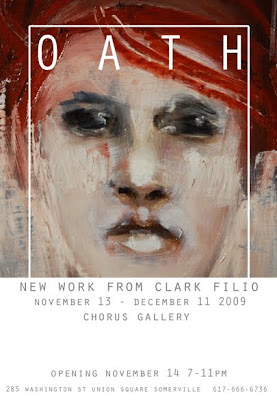
New section on the website:
noahrabphoto.comPortfolios >
"The Experimental Life"
I also attached Randolph Bourne's book
Youth and Life that I've been studying recently.
"[Conformity guarantees] you popularity and fortune at so small a price – only the price of your best self!” -Bourne
REQUIRED READING
CLICK HEREAlthough some skeptics discount Randolph Bourne as an irrelevant romantic, Bourne’s unwavering idealism about individuality and the moral paradox of war paved the way for a solidified youth culture that reappears in times of distrust in mass culture and unpopular wars. It has become clear through debates over war since his death that Bourne’s voice will forever remain in the modern American conscious.
To understand when and why a youthful moral ideal peeks its way into the American conscious, it is important to discuss what formed the profound moral ideals and the historical context in which he was writing. He grew up in the town of Bloomfield, New Jersey. Bourne witnessed very important clashes of culture during his years there. Christopher Lasch tells the story in his book, The New Radicalism in America, “The village was twice invaded during Bourne’s lifetime, first by industrial workers, who created the social split that he analyzed in an early article, “The Social Order in an American Town,” and again by commuters from New York, who transformed it into a suburb.” Bourne witnessed first hand the genteel culture of his home town’s disdain for working class’s seeming irreverence.
He came to reject the expectations and norms of this genteel culture he was raised in. His father was distant, and Bourne disliked visiting home. His parents were intimidated by their son’s intelligence and felt obligated to indulge his wishes because of his deformities. Bourne’s face was twisted and misshapen by the forceps used during his birth. At the age of four, he contracted spinal tuberculosis and was left with a hunchback. Born in 1886, he was part of a generation of modernity, where many started seeing religion as meaningless, corporal punishment was mainly abolished, children worked in coalmines and arguably, children raised themselves. It was the first era where youth was recognized as a distinctly different period in life. Bourne and this young generation, that he became the voice of, found itself empowered in a way it had never been before.
Randolph Bourne’s early writings were dominated with a sense of friction between a young generation and the old establishment. The early 20th century was the first time in American history that there was a defined social stratum of intellectual youth. Many even referred to this group as the “Youth Problem.” The Bohemians in Greenwich Village could be defined by a culture of talking in salons and cafes about the “experimental life,” and a general rejection of bourgeois expectations. Idealism, aestheticism, feminism, friendship, music, reading, and impassioned discussion were for Bourne social ideals. Most of the Bohemians were independently wealthy, and this allowed them to act on passion and whim. This may have contributed to their philosophies of living becoming somewhat idealistic and naïve. Bourne once wrote, “Youth rules the world, but only when it is no longer young. A tarnished, travestied youth is in the saddle in the person of middle age. Old age lives in the delusion that it has improved and rationalized its youthful ideas by experience and stored-up wisdom, when all it has done is to damage them more or less – usually more. And the tragedy of life is that the world is run by these damaged ideals.” He hopes that youth can retain their ideals long into their adult life, thereby positively influence the whole of society.
In “The Dodging of Pressures,” Bourne describes where the pressures on the youth are emanating from and why one must avoid their narcotic effect. “The dangers that I speak of are the influences and inducements which come to youth from family, business, church, society, state, to compromise with himself and become in more or less degree conformed to their pattern and type.” [Conformity guarantees] you popularity and fortune at so small a price – only the price of your best self!” Thus they seduce him insidiously rather than openly attack him.” Bourne was profoundly skeptical of groupthink, mass culture and the mob mentality: anything that would inhibit the individual’s ability to think and act independently.
Bourne was challenged and shocked by the possibility of America entering World War I. In “Twilight of Idols,” he is struggling with his disagreement with his mentor and former idol, pragmatist, John Dewey in supporting President Woodrow Wilson in his decision to enter the war. Bourne wonders whether Dewey and his fellow pragmatists found the forces to enter the war too strong to overcome, or whether they saw it as a gallant war that would lead to a grand end for democracy. Bourne sees both of these as “intellectual suicide.” Bourne’s wartime attacks on Dewey marked a departure from Dewey’s philosophical pragmatism. He demanded that Dewey and other progressive intellectuals make a compelling pragmatic case for American intervention. Bourne’s cries did not fall on grateful ears. He had to resign from The New Republic, and only The Seven Arts had the nerve to circulate his writings against the war. Many friends did not like to be seen with Bourne and his father wrote begging him not to disgrace the family name. Bourne discusses this in “The War and Intellectuals,” when he articulates something that can be applied to all forms of rebellion and can be an allegory for Bourne’s life. “But again the terrible dilemma arises – either support what is going on, in which case you count for nothing because you are swallowed in the mass and great incalculable forces bear you in; or remain aloof passively resistant, in which case you count for nothing because you are outside the machine of reality.” Nevertheless, his next assertion of unwavering idealism is why Bourne continues to arise in history. “The intellectual who remains his animus against war will push out more boldly than ever to make his case solid against it.”
One of his recent biographers labeled him a “forgotten prophet.” However, one cannot read Bourne’s war essays and be blind to their prevalence to the current war in Iraq and Afghanistan and also during the opposition to the war in Vietnam. It is clear that many on the right and left alike had justified the Iraq War in strikingly Wilsonian terms. During the Bush administration, we heard Wilsonian rhetoric from the White House, the justification of the war being to thwart a dangerous regime and protect American from weapons of mass destruction. After these justifications evaporated, the administration attempted to cloud public memory, and instead promote the idea that we were spreading freedom and democracy to the Middle East. According to Professor Emeritus at the University of Southern California, Ronald Steel, Wilson’s overriding idea was that of “constructing the world according to American principles.” The parallel can also be made between Lyndon B. Johnson, with the Vietnam War, and Wilson. Johnson firmly believed in the Domino Theory and that his Containment policy required America to make a serious effort to stop all Communist expansion as to preserve and spread American principles internationally.
Representative Ron Paul frequently refers to Bourne directly and indirectly in his arguments against the Iraq war, mainly from “War is the Health of the State.” Paul stated in a speech before the U.S. House of Representatives on May 22, 2007, “With war, the state thrives…. Certainly, the neoconservative belief that we have a moral obligation to spread American values worldwide through force justifies the conditions of war in order to rally support at home for the heavy hand of government. It is through this policy, it should surprise no one, that our liberties are undermined…Out of fear of being labeled unpatriotic, most of the citizens become complaint and accept the argument that some loss of liberty is required to fight the war in order to remain safe.” Paul uses Bourne as a intellectual base for his argument that there is a paradox inherent in entering war, especially to “spread” American principles.
The moral dilemma that Bourne develops about going to war for “moral” causes will be a reoccurring discussion for generations. No matter how high a cause is for entering war; there will also be human rights violations within war that will in negate its purity. A recent event that is an example and historical manifestation of Bourne’s ideas were the systemic human rights violations that occurred in the Abu Ghraib prison. Bourne repeatedly warned that war is unpredictable and uncontrollable consequences would occur during a war technique.
Many of the fears that Bourne vocalized did in fact occur, but this is not his greatest significance. Although sometimes naïve and contradictory, his musings became the highest common denominator, the moral ideal, the grounding for how to progress as an American culture, aside from the pressures of nation or state.
-Noah





















